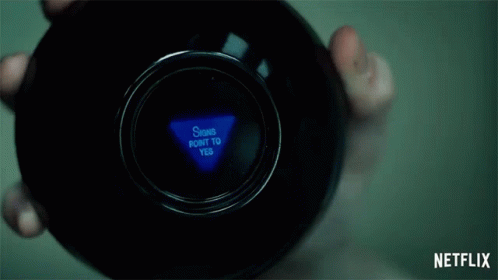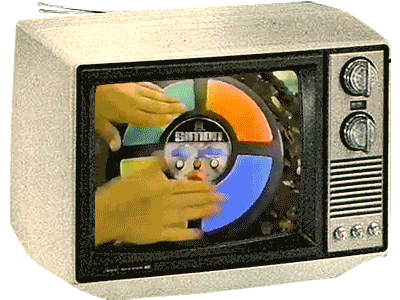Five 80s TOYS & GADGETS from Stranger Things Season 4 Part 1
Part 1 of Stranger Things Season 4 is as entertaining as ever, and like previous seasons, is full of nostalgic 1980s Easter eggs for Gen-Xers to point and gawk at. I was especially interested in the 1980s toys and gadgets used as they brought me right back to childhood. Here are five of those toys and gadgets and the history behind them.
Magic 8-Ball
In a flashback to 1979, the test subject called Ten uses a Magic 8 Ball to answer Dr. Brenner inquiries. A bloody Magic 8 Ball was also featured in the Stranger Things season 4 trailer prior to release.
The spherical Magic 8 Ball, which resembles an oversized billiard ball, contains a blue, viscous liquid and a 20-sided die floating within. The die gives various answers to “yes or no” questions that can be seen through a transparent viewport. The original elements of the Magic 8 Ball were invented way back in 1946 by Albert C. Carter and Abe Bookman. The initial device emulated a psychographic mechanism used by Carter’s clairvoyant mother. Albert and Abe formed a company called “Alabe” (get it?) who marketed their device as the Syco-Slate, which was cylindrical and often illustrated with a Gypsie fortune teller. The Syco-Slate would later evolve into the Magic 8 Ball when Brunswick Billiards commissioned Alabe to form the 8-ball version in 1950 as a trinket. The rest is pop culture history.
The Magic 8 Ball is still sold by Mattel today in various sizes and variations.
Hello, World!
Simon
Simon is an electronic memory game that became a cultural icon in the 1980’s rivaling that of the Rubik’s Cube. The gadget generates a series of sound tones and colored lights on four buttons. The player has to repeat the sequences which become increasingly more complicated after each round. When the user makes a mistake in the sequence, its game over. Designed by Ralph Baer and Howard Morrison, Simon was released in 1978 at New York City’s Studio 54. It was one of the first toys that ran on computer programming. Charles Kapps, a computer science professor and author at Temple University, coded the assembly language and Lenny Cope programmed the software. The inspiration for Simon was an Atari arcade game called “Touch Me”. Baer was impressed with the gameplay but dismayed with the poor sound and visuals. He thought he and his team could do better. It seems he was correct as Simon became one of Milton Bradley’s best-selling Christmas toys in its debut year. The company would sell other variations starting in 1980 with the smaller Pocket Simon and the amplified Super Simon which had eight buttons.
Interestingly, Simon initially sold for $24.99 which is over $100 in today’s money. However, you can by a Simon from Hasboro now for just $19.99 in today’s money. That would have been less than $5 back then.
Walkman
Stranger Things’ Max would utilize her Walkman as comfort for the multiple traumas she endured. Little did she know that the prototypical, portable music player and Kate Bush would save her from a macabre demise. Max is a good example of many parents’ concerns that their kids used the device to turn off the world around them. If only they could see the world of the 2020s!
As legend has it, the origin of the Walkman started with Sony cofounder Masaru Ibuka, who requested engineers to develop a portable, play-only cassette player compatible with headphones he could use on business trips. The idea caught on and the original Walkman TPS-L2 was launched in Japan in the Summer of 1979, selling far more units than expected. The Walkman release to the U.S. and other parts of the world almost a year later. After the initial success, Sony developed other portable devices and enhancements of the Walkman brand throughout the 1980s including the smaller second Walman WM-2 in 1981, the introduction of radio in 1982, and the close-packed WM-20 model in 1983 that wasn’t much larger than the cassettes it contained. Sony continued its Walkman line, dominating the portable music market throughout the 80s and 90s having sold 1.86 million Walkman cassette units by its 20th anniversary in 1999.
However, as we know, all good things must end, and portable CD players displaced the cassette devices. Soon thereafter, digital music would supplant physical media all together in the 21st century. Was it the end of the Walkman?
Not exactly. Sony manufactures digital music players under the Walkman brand today, although they are not nearly as successful as their ancestors.
Lite Brite
As it turns out, the kids of Stranger Things discovered that the Lite-Brite is the best way to communicate with your friends if you’re trapped in an interdemesional nightmare world.
This is not surprising though. Invented by Burt Meyer and Joseph Burck in the 1960s with increasing popularity for the remainder of the 20th century, young artists could use the Lite-Brite to create glowing pictures by pushing colored plastic spigots through black paper. The pegs were lit up via a standard light bulb. Some of the black paper had predefined picture templates with the likes of favorite cartoon characters, but the real fun was creating your own luminous masterpieces. The Lite-Brite inventors licensed the toy to Milton Bradly/Hasboro which released many variations over time including portable and three-dimensional versions.
Incidentally, Meyer and Burck worked for the same design company, Chicago-based Marvin Glass and Associates, as Baer and Morrison, the designers of Simon. One could say that Lite-Brite is Simon’s big brother. The company folded in 1988 but former partners would go on to start a toy design studio called Big Monster Toys.
In 2011, Time Magazine registered Lite-Brite on its list of All-Time 100 Greatest Toys. You can still purchase a basic Lite-Brite for… wait for it… $19.99.
NES’s Duck Hunt
In a recent podcast episode, we listed our favorite Nintendo Entertainment System games and Duck Hunt was definitely among them. I’ve always been fascinated by the light gun, or Zapper, and how it could target the ducks on a TV to pixel-perfect accuracy. It even worked on my grandmother’s old television. Amazing!
Duck Hunt was released in 1985 in North America and a year later was added in NES packages that included the Zapper. Although it seems like complete magic, the Zapper’s function is actually fairly simple. The device is a “photodiode”, which lets light reach the sensor through the lens at the end of the gun. The photodiode is connected to the trigger as a switch. When a player pulls the trigger, the entire game screen is turned completely black excepts for tiny white pixels where the ducks are flying. The photodiode then only absorbs the “duck light” points. The Zapper then compares that to a previous check to determine if the user shot the duck or not. The whole sequence happens quickly because, well, light is really fast. Although, if you look closely, you can see the screen blacken for yourself.
The nameless hunting dog in Duck Hunt has become somewhat of a cultural icon, and the ire of anyone who wasn’t particularly good at the game. Every time unskilled players missed the ducks and lost a round, the pixely mutt would emerge from the bushes, mocking the ne'er-do-well with its 8-bit laugh. I’ve included a popular meme that facetiously pokes back at the canine’s digital guffaw.
F***k you laughing dog! I’m trying my best, okay!
Did you spot any other familiar toys or gadgets from Stranger Things Season 4 Part 1? Do you think Part 2 will have even more Easter eggs? Comments below and let me know or get with me on Twitter. With that, I leave you with this quote:
“To this day, I have the most fond memories of some of my old toys.”



















Jamie and Milo debate gaming. and the video game console rivalry between the Nintendo 64 and the PlayStation 1.